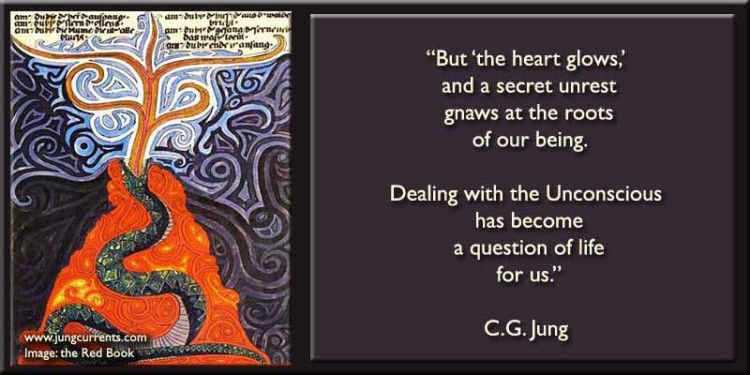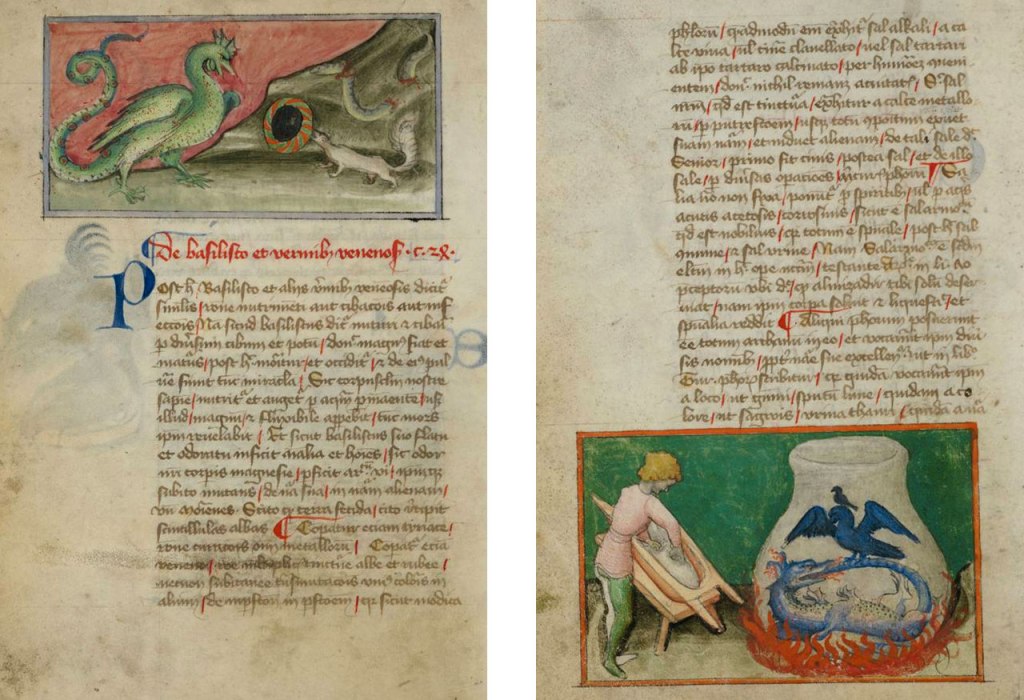
Images or the Symbols. The magic of the Alchemy,
When I first saw these paintings, It suddenly reminded me of some old Persian (or oriental) style.
They are picturing the Myths with telling poems and, or the famous love stories, like Layla & Majnun.
But I can’t decipher the writing on these paintings. I don’t know Latin! Once a friend told me that I’m so naive, and I unbosom or reveal my inner secrets easily. I just wanna tell you I don’t give a damn! I think I have nothing to lose to say “I don’t know” and believe that man never stop learning.

Though it is not so important, I’ll try to understand the symbols with a little help from Dr Jung. No wonder, It is Alchemy. And my alchemy was not always good at school! But anyway, the paintings tell their own stories, and that’s what I can understand.
First, I might explain that the word “Alchemy” comes from the Orient language, and it is Al-Shimi: Al is the Arabic article, and Shimi is the opposite word of Physic. Something which not material but soluble.
And as Master Dr Carl Gustav Jung means, it has the same substance as the soul.


Here are some interesting discoveries about manufacturing this painting. Let’s get some knowledge of these all about:
The Aurora Consurgens is an alchemical treatise of the 15th century famous for the rich illuminations that accompany it in some manuscripts. While in the last century, the text has been more commonly referred to as “Pseudo-Aquinas”, there are as well arguments in favour of Thomas Aquinas, to whom it has originally been attributed in some manuscripts. The translated title from Latin into English is “Rising dawn.”

Alchemical miniatures of the «Aurora Consurgens».
The images are from the s. XV and, the book is falsely attributed to Saint Thomas Aquinas. Edition Raimon Arola. The argument against the authorship of Thomas Aquinas is that the style of Aurora consurgens does not correspond to that of Thomas Aquinas (except in the Fourth Parable, which in style and content is similar to the “Expositio” in “Symbolum Apostolorum”, which is an oral lecture of Thomas of Aquin). According to von Franz; the following arguments support the hypothesis of Thomas Aquinas being the author of Aurora Consurgens: Its author knows both the Bible and liturgy intimately, he quotes rather little of classical alchemical texts and mentions neither chemical recipes nor technical instructions, which indicates a clergyman to be its author. His praising of the poor is typical for a Dominican or a Franciscan. The passionately style of being gripped could result from an intrusion of the unconscious which – as psychological experience tells – might have compensated a rather intellectual consciousness dominated by logic. The biography of Thomas Aquinas fits this, as, before his death, Thomas Aquinas is said to have had a disturbing vision, the content of which is not authenticated. But he is said to have interpreted the Song of Songs on his deathbed. Thus this treatise might well represent his last seminar or his last words.

Medieval alchemical texts reflected the “Christic” mystery and, in this sense, we would like to highlight the famous Aurora Consurgens, attributed to Saint Thomas Aquinas, although it is very unlikely that it was the work of the Italian theologian. The Aurora Consurgens owes its celebrity to a series of illustrations found in the oldest known manuscript, dating from the first decade of the 15th century, although everything seems to indicate that it was a text from the 13th century.

The discovery of the manuscript has a curious history. When C. G. Jung became interested in alchemy in 1930, he read a compilation of ancient texts, made in 1590 by Conrad Waldkirch and entitled Artis Auriferae. This compilation contained the Aurora Consurgens, but Waldkirch suppressed the first part arguing that the constant relations between the sacred Scriptures and alchemy discredited the sacredness of the revelation, Jung looked for the censored part and found it in manuscript form in the Zurich library. Thus, contrary to Waldkirch’s intention, the first part of the Aurora Consurgens has been extensively studied, while the second is practically unknown, although it is not without interest.

The first part consists of a small treatise in which the author weaves the biblical quotations together with the alchemical operations. The translation of the title would be ‘The rise of the dawn’ because, according to the author: “the dawn is like the golden hour; thus this science [alchemy] has an hour whose end is golden for those who operate according to the straight path », also because:« the dawn is called the end of the night and the beginning of the day or mother of the sun. Thus, in its extreme redness, our dawn is the end of all darkness and the flight of the night ». To argue his claim, the author uses various passages from the Psalms, such as: “And the night will be illuminated like the day” (Psalm 139, 12). The dawn is the mother of the philosophical sun as Mary is the mother of God.

[Excerpt from R. Arola’s book, The Kabbalah and Alchemy in the Western Spiritual Tradition] The book with the images we have presented is kept at the Glasgow University Library.
https://www.arsgravis.com/la-aurora-de-la-gran-obra-alquimica/
And here at the end, I wanted to present you an excellent video on a botanical mind or a thousand mellion-year WWW in Nature.
Sources:


I dont know how I missed that exhibition – looks fantastic!
LikeLiked by 1 person
You say that! Thank you for dropping by. Cheers 🤗🙏
LikeLiked by 1 person
Wow, what a fantastic exhibition that would be to see! Hopefully after things settle down from our current third European wave of the pandemic this proposed show will happen and then go on tour and come to London.
Why? Because much like the sacred 16th century alchemical treatise “Rosary of the Philosophers”, I’m intrigued by metaphor rich artwork and would love to explore these images more … especially the divine hermaphrodite one! Two heads, one body.
Loved the video too, especially when they talked about “Healing Songs” and how they are whistled and whispered whilst sung. Music of the spheres or universal music indeed! Fascinating post Aladin, thanks for sharing. Love and light, Deborah.
LikeLiked by 1 person
You belong to the rosary of philosophers, I bet! We can, as you say, explore all the images. They are somehow, somewhere, the key…?! 🤗🙏🙏🤗💖💖
LikeLiked by 1 person
Fascinating video! Thank you for sharing it.
LikeLiked by 1 person
Indeed it is, thank You my dear Chris, have a nice Sunday ✌️♥️😆
LikeLiked by 1 person
You too (despite the snow)!
LikeLiked by 1 person
It’s been stopped yesterday, now going to be warmer. Tomorrow might be ca 16 degrees Celsius 🙃
LikeLiked by 1 person
I don’t know Latin either. (And I think that revealing inner secrets is endearing.)
LikeLiked by 1 person
Surely it is. Thank you, dear Crystal 🙏🤗
LikeLiked by 1 person
My first (root) teacher Anthony Damiani loved Alchemy and taught from “The Psychology of the Transference” from Jung’s collected works which is the clearest explanation of alchemy I’ve read–but I know very little. I was always more drawn to Astrology which my teacher also loved, but now that I’m studying Egyptian mythology again, alchemy is so obviously part of the tradition.. Thanks for sharing this wisdom and your honesty about what you don’t know. We’re all students together.
LikeLiked by 1 person
Thank you Elaine, my lovely friend. Your kind words warm my heart.
Have a wonderful Easter weekend 🤗🙏🌹
LikeLike